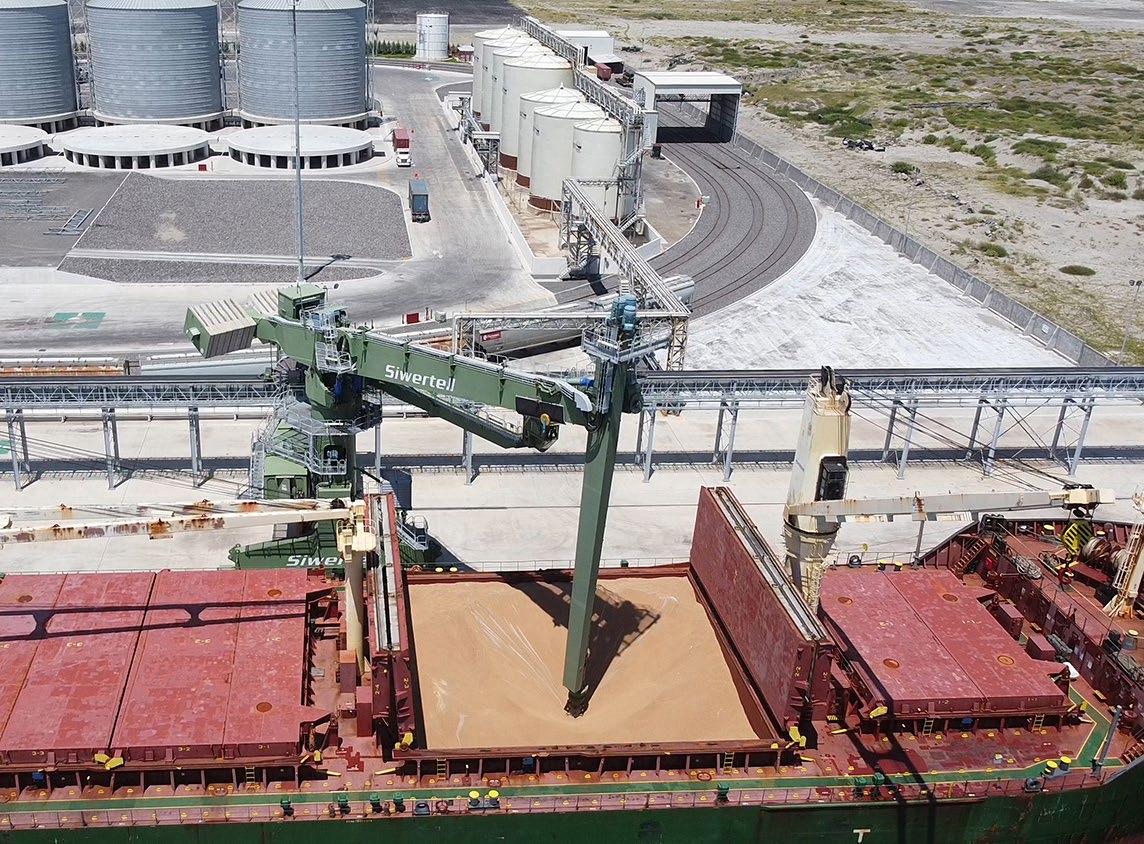
13 minute read
ship loading and unloading
from BTI Autumn 2022
by Maritime-AMC
LESSENING THE LOAD
Technology has a major role to play in boosting efficiency at port terminals and investments have been underway to underline this
The port of Veracruz in eastcentral Mexico is being developed into one of the most advanced port terminals in the world. Accessing global waters via the Gulf of Mexico gateway, the port is undergoing a US$5bn redevelopment project, which will quadruple its installed capacity to reach more than 90m metric tons by 2030. Part of this development is five new terminals and a new cargo processing and logistics area.
Integral to this development is Grupo Gramosa’s Puertos Especializados Transnacionales (PETRA) new agri-bulk terminal. It was planned, designed and built for the specialised handling of solid, liquid and semi-liquid agricultural bulk, with a storage capacity of 126,000 metric tons of dry bulk and 38,400 metric tons of liquids.
PETRA is now operational and from the outset, its dry bulk import facility has been able to offer unmatched grain handling and environmental protection. Underpinning these exceptional capabilities is a single rail-mounted Siwertell ST 640-M ship unloader.
It has a continuous rated capacity of 1,200t/h and a peak one of 1,320t/h, discharging vessels up to 80,000 dwt. The unloader’s seamless flexibility enables it to handle a number of different grains such as corn, soya meal, dried distillers grains and canola seeds without any loss of efficiency.
“Gramosa Group invested US$85m in the PETRA terminal as it saw an opportunity to reduce the cost of raw materials for an animal-feed facility, achieved by getting more materials into the plant at a lower cost due to greater efficiency,” explains Jesus Mil Linares, terminal general manager, Grupo Gramosa.
Talking about its new Siwertell unloader, Linares could not speak more highly. “The unloader minimises terminal operating costs. In addition, there are close-to-zero dust emissions, no disturbing noises, and no spillage,” he notes. “This means no cargo losses, which is particularly important when it comes to expensive commodities such as corn, which is currently priced in the region of USD 350 per metric ton and DDGs at USD 650 per metric ton.
“Furthermore, if you consider commodity prices scaled up alongside logistics, with a vessel costing up to US$35,000 a day, we are in a much better position to negotiate more favourable rates. We are faster than any other agribulk terminal in Mexico, and offer as low as 0.01% losses, with others reaching around 0.5%, if not more,” he explains.
“One operator is required for the unloader, which means we are using fewer resources as the terminal is fullymechanised from unloading to truck or rail-car loading,” Linares says. “They can comfortably sit in an air-conditioned control cabin, or operate the unloader via remote control, which gives us great flexibility.”
Linares highlights that the efficiency of its Siwertell unloader will meet the terminal’s planned growth for the next 40 years. Other benefits include the capability of accommodating an extended draft. “We can cater for larger vessels with a draft of 20m, while other terminals are limited to 13m,” he says. “The terminal also has a highly efficient, looped rail network, which is connected to the region’s two main railway lines, Ferromex and Kansas City Southern de México.”
Grupo Gramosa is dedicated to the commercialisation and transformation of agricultural bulk and the preparation of balanced animal feedstocks. It originally ordered the Siwertell ship unloader in 2018. Bruks Siwertell delivered the unit fully assembled in 2019, with commissioning and operator training being carried out in 2021.
Gramosa chose Siwertell technology because it out-performed all other competitor systems during a fourmonth selection process; particularly the two 600t/h pneumatic systems it was initially considering.
The analysis showed that a single Siwertell ST 640-M ship unloader would be a more economical solution in the long term. The operating costs comparing two pneumatic unloaders, delivering an equal total capacity, was lower. Also, the Siwertell unloader offered cost savings from reduced berth occupancy as through-ship efficiency was greater. Furthermore, the quality of grain shipments was also considered.
A statement from Gramosa at the time of the order states that: “The Siwertell system was selected after considering many factors and multiple equipment comparisons. Analysis included operating principles and mechanisms, investment costs, as well as operating costs.
“An important factor was cargo loss and damage. We will handle a number of different grains at the new terminal such as corn, rice, wheat, soya beans and canola seeds. The low conveying speed of the Siwertell screw-type unloader means that the grain is not damaged during handling, which will give us added value and differentiate us from our competition.
“Another consideration in the selection of Siwertell equipment was the balance of performance across multiple grains such as soybean meal and DDGs. Other systems on the market did not compare. For example, in the case of pneumatic equipment, it is very efficient at handling grains, but offers very low efficiency, translating to high operating costs, in soybean meal and dried distillers grains.”
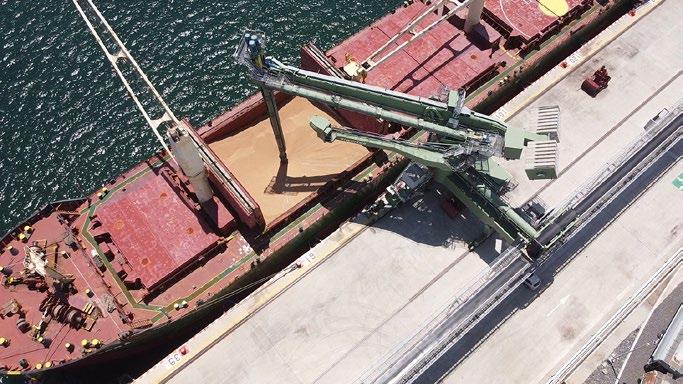


“It is a great endorsement of our technology, not only for it to be chosen following detailed analysis for several months to compare it with other equivalent capacity systems, but also now that it is operational, for those comparisons to be a reality for the owner,” says Patrik Henryson, sales manager at Bruks Siwertell.
“Thanks to the tremendous growth in the agri-bulk segment over the past few years, grain is now the third largest cargo that Bruks Siwertell machines handle,” he explains.
“We understand that grain handlers have to meet some of the most challenging dry bulk material demands, and their dry bulk equipment must match these, offering consistently high capacities for maximum profitability, but also maintaining the quality of shipments through sensitive handling.
“We talk about our systems offering grain handlers a competitive edge, and this is exactly what PETRA’s new Siwertell system is now delivering. The unloader is very well suited to the job it has been ordered for. It is so efficient that it directly lowers operating costs, and enables Grupo Gramosa to negotiate better commodity rates.
“The advantages offered are incomparable to other technology, and the Siwertell unloader is so efficient that it will reliably meet the terminal’s growing capacity requirements for decades,” Henryson concludes.
Reachstacker investment
Kalmar, part of Cargotec, has signed a contract to supply the Port of Helsingborg in Sweden with a Kalmar Electric Reachstacker plus an option for two additional electric reachstackers.
The order includes comprehensive training for maintenance technicians and equipment operators, and delivery is scheduled for the end of the fourth quarter of this year.
The Port of Helsingborg is one of northern Europe’s leading ports. To address increasing demand for both container volumes and logistics services in southern Sweden, the port will build a new container terminal further south in Helsingborg. The project is due for completion in 2028.
The new Kalmar Electric Reachstacker supplied to the Port of Helsingborg will be the first machine of its kind to be delivered to a customer in Sweden. It will have a wheelbase of 6.5m, a stacking capability up to 5 high, a maximum lifting capacity of 45 – 32 – 16 in the 1st, 2nd and 3rd rows respectively and a battery capacity of 587kWh. It will join an equipment fleet that already features three Kalmar Eco Reachstackers.
Bart Steijaert, chief executive of the Port of Helsingborg, says: “We will sustainably develop the new container terminal with automation, electrification, and efficient land use. Investing in the electric reachstackers is an important step in our journey.”
Eric Wass, sales representative, Kalmar Sweden, adds: “With the Kalmar Electric Reachstacker, terminal operators no longer need to sacrifice performance and productivity in order to reduce their carbon emissions.”
KALMAR ELECTRIC REACHSTACKER
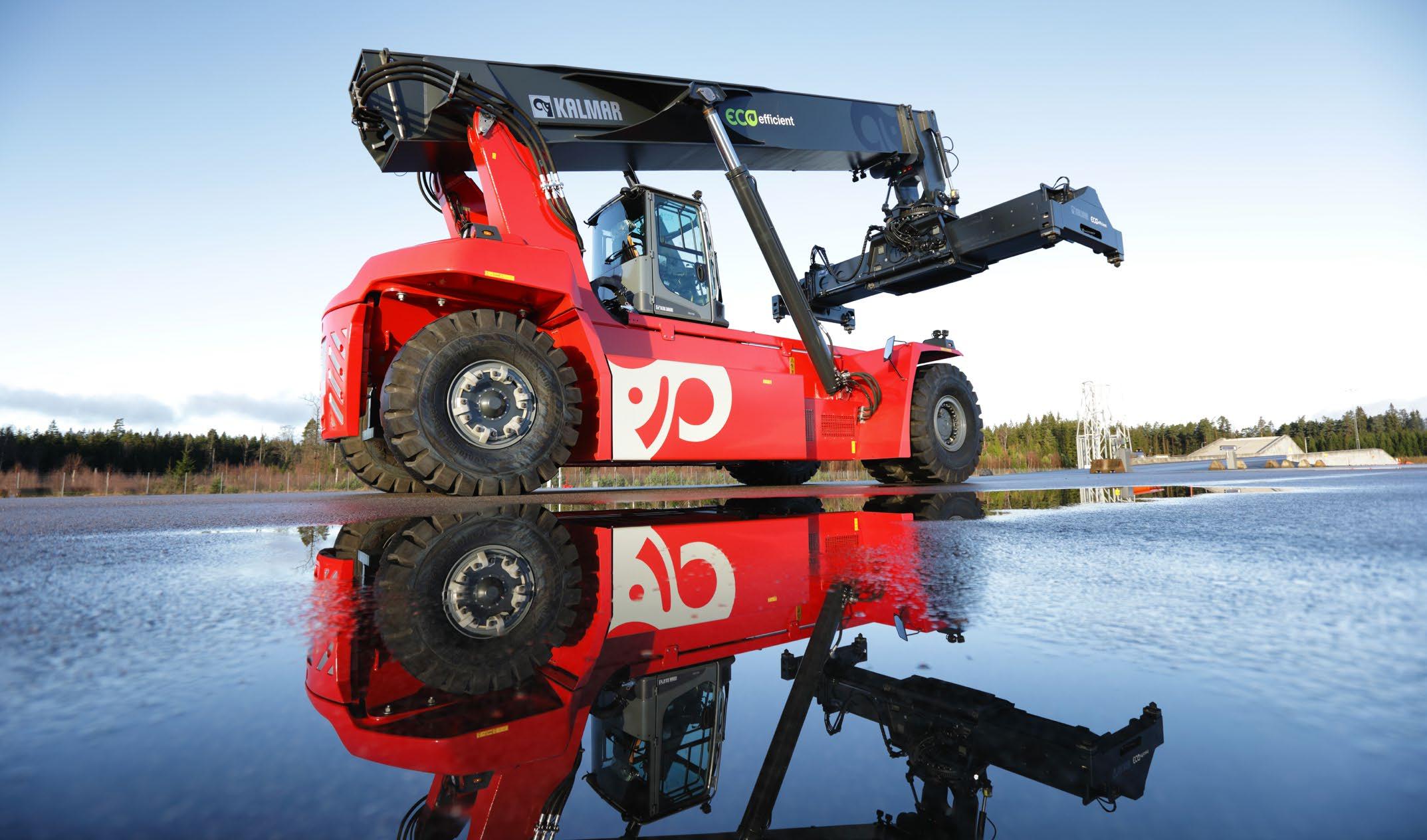
NEUERO: KICKSTARTING INNOVATION
COMPANY NEWS
French agri-food group Soufflet in Rouen recently took delivery of the new Neuero Kiko (kick-in kickout) shiploader, which has a loading capacity of up to 1,200t/h of grain with minimal dust emission. After four successful installations in the region, the Neuero Kiko DSH (dust suppression head) has impressed port operators with its efficient operation and high dust suppression, due to mass flow control.
The shiploader was assembled in Germany and transported using a heavy lift ship to France. The most significant advantage of this means of transport is the short downtime of the terminal. However, such transport is not easy and requires a lot of planning and preparation. Therefore Neuero and Soufflet already agreed on this shipment method at the beginning of the project so that lifting points and lashing points could be integrated into the machine design.
Heavy lift cranes set the shiploader into position at the site and Neuero was able to begin dry testing. The next step was hot commissioning after the site conveyor was ready.
So what is the difference that makes the Kiko DSH operate so efficiently and with the highest environmental standards available today? The answer is a combination of mass flow and pendulum movements. The mass flow allows loading of the cargo at low speeds, reducing dust emission. The shiploader does not eliminate dust completely, but reduces it significantly, therefore avoiding product segregation and slow material discharge speed. Older systems throw the product at boom height and try to stop it at arrival, especially during hatch trimming work where it is needed to fill all gaps.
The pendulum movement that we call Kiko allows the loading head to move simultaneously with the vertical telescope and enclosed system. Additionally, the slewing movement allows all areas of the hold to be reached, including the corners.
For more information, visit: neuero.de/en
READY FOR HOT COMMISSIONING
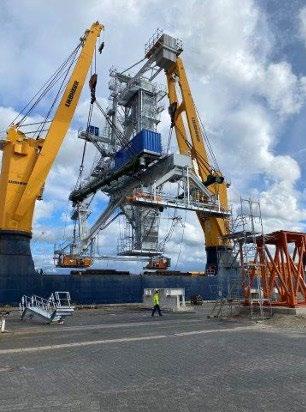
DEPARTING FROM GERMANY
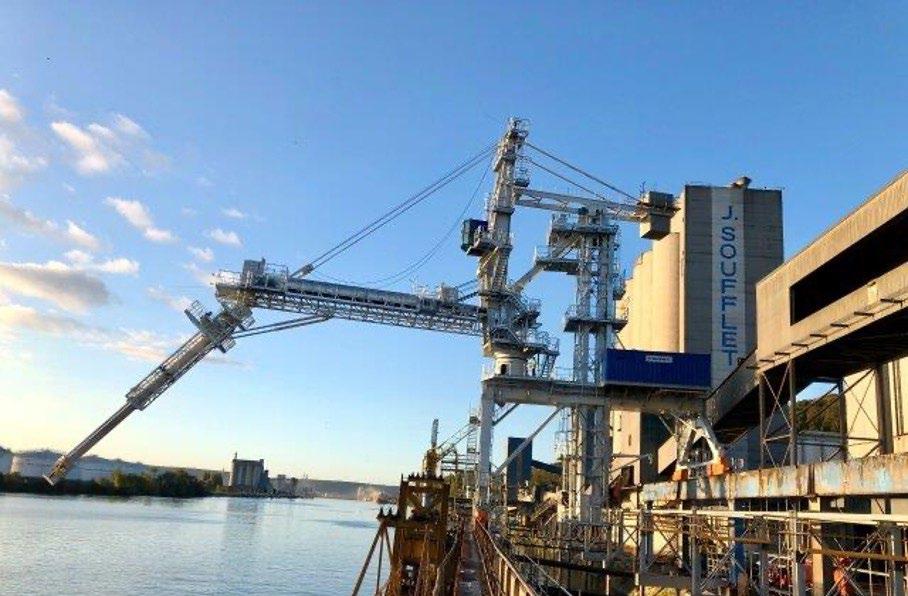
N.M. HEILIG: ENSURING A SMOOTH OPERATION
COMPANY NEWS
THE BRIDGE SECTION WAS TRANSPORTED BY ROAD AND ARRIVED IN THE MIDDLE OF THE NIGHT When a 200m long quay that was more than 100 years old and the loading system on it were in urgent need of replacement, Netherlands-based Walhout Maritime called on N.M. Heilig to ensure everything went smoothly.
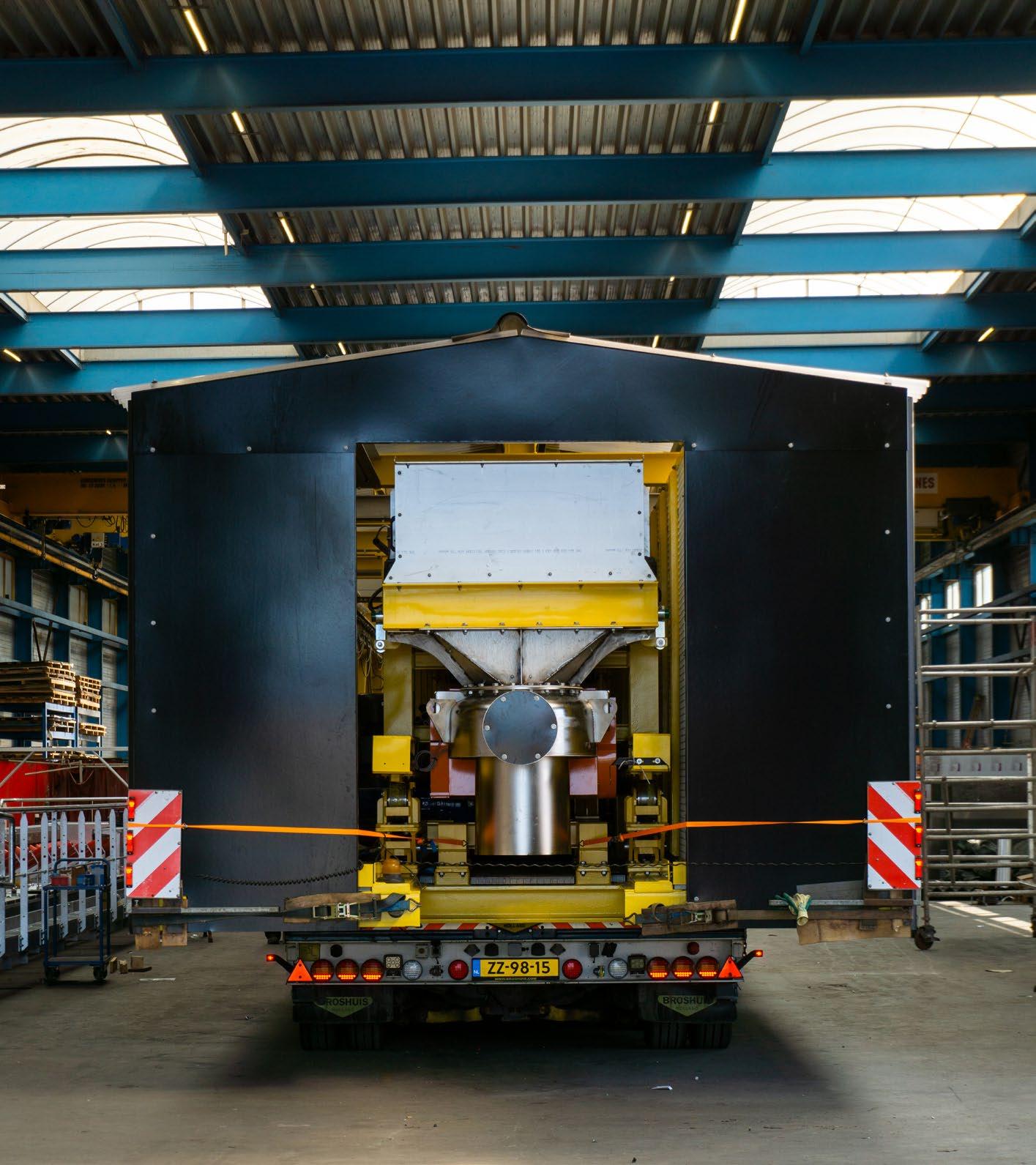
Walhout Maritime specialises in keeping storage and transshipment companies operational by realising or maintaining mooring facilities during quay construction and maintenance. Since these components are the lifeblood of these companies, an integrated approach is necessary.
N.M. Heilig – part of Heilig Group – worked on a new loading portal for fertiliser manufacturer Rosier Nederland at the quay in Sas van Gent, collaborating on the ideal solution for loading and unloading facilities and working out the entire process from design and choice of materials to implementation.
The challenge was that Rosier’s storage and transshipment activities had to continue during the 10-month quay replacement. During this time, eight temporary mooring facilities were used so that construction could continue while ships were loaded.
Once the main construction of the quay was completed with the old shiploader retained, everything was set in motion to dismantle the old loader and install and commission the new loader within two weeks.
In order to carry out the replacement of the loading portal as efficiently as possible, N.M. Heilig constructed a parallel workflow, beginning the construction of the new shiploader as work began on the quay repair. With its large workshop, N.M. Heilig was able to assemble, mount and prepare the whole bridge section for transport.
During the design, the maximum dimensions of the bridge section were taken into account, so that it could be transported on the public highway with the necessary transport guidance.
After four hours, the more than 36m-long, 4.5m-wide and 110,000kg heavy bridge section arrived in Sas van Gent in the middle of the night, where it was lifted and placed the next day using two telescopic cranes. Rosier has been making high-quality fertilisers for 140 years and is active in 120 countries, contributing to sustainable and efficient global food production. The new shiploader loads ships quickly and efficiently for fertiliser distribution and is retractable, extendable and therefore mobile, allowing even or angled loading across the vessel at a speed of 300 tonnes per hour. A special bellows function has been applied to reduce dust formation, which can go over a 6m ship railing, so it is suitable for both barge and coaster. The control cabin, meanwhile, is fully executed by Beemster Electrical Solutions, also part of the Heilig Group.
By making use of several companies within the Heilig Group, a smooth-running process with little disruption to the companies involved was ensured. After two years, it is an impressive final result.
N.M. Heilig designs, builds and installs bulk handling and recycling systems, both single machines and complete turnkey installations. Let’s see how we can help you design and produce a system that meets your exact standards and requirements. For more information, contact: N.M. Heilig B.V. Newtonstraat 17 1704 SB Heerhugowaard The Netherlands Tel: +31 (0)72 5716688 Email: info@heiligbv.com heiligbv.com

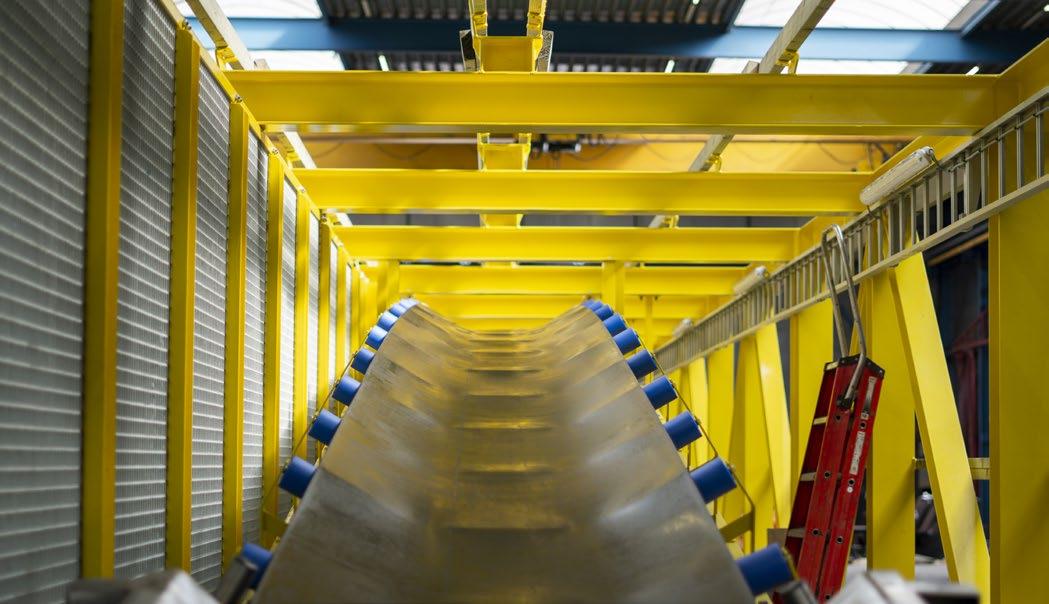
N.M. HEILIG CONSTRUCTED A PARALLEL WORKFLOW, BEGINNING WITH THE CONSTRUCTION OF A NEW SHIPLOADER
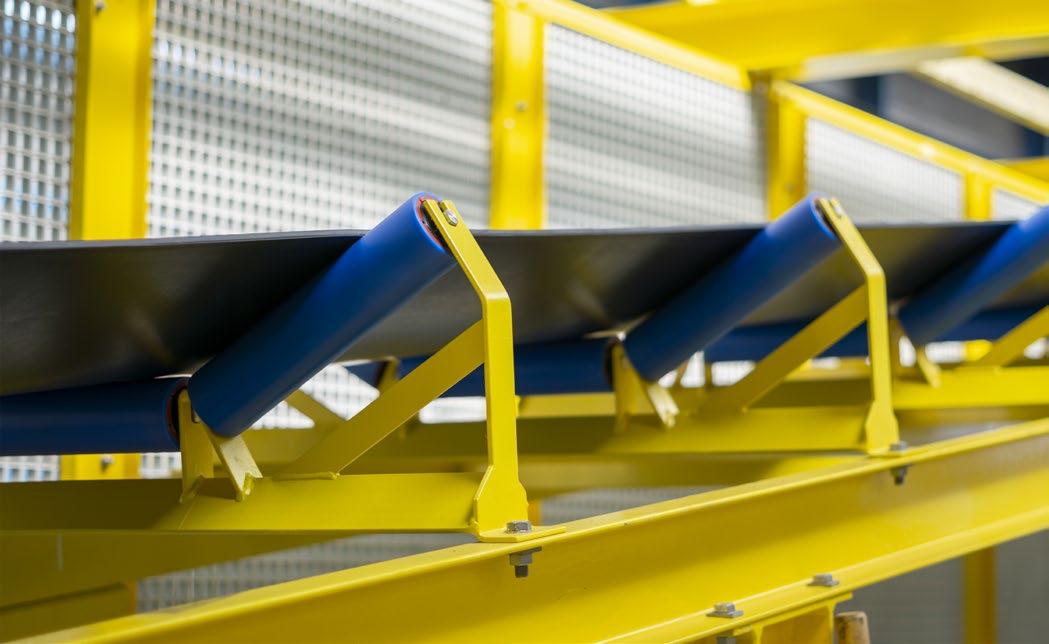
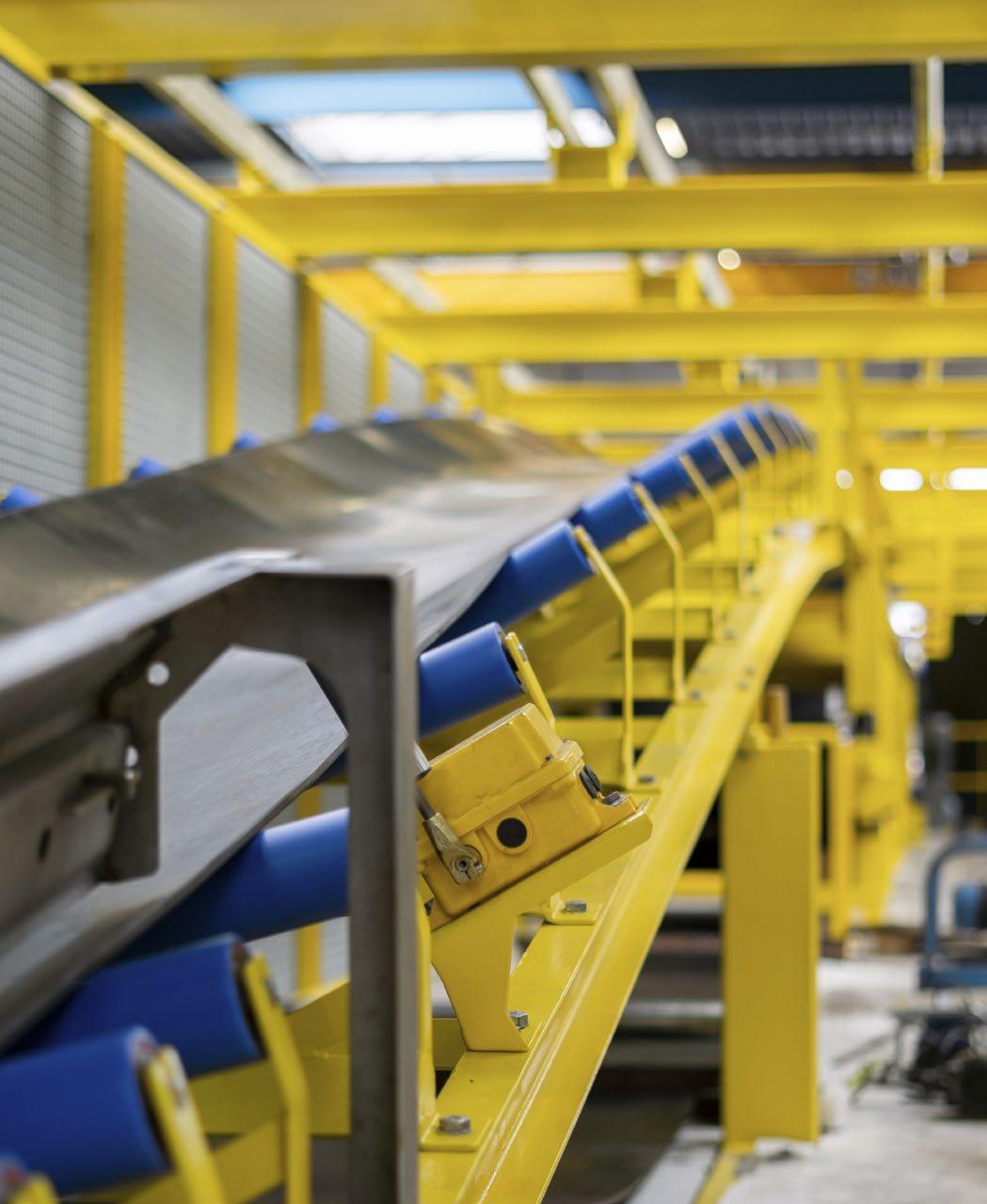
ELME SPREADING THE WORD
COMPANY NEWS
As the world’s leading independent spreader manufacturer, Swedish group ELME Spreader supports companies worldwide with container handling solutions to make their work easier and more profitable.
ELME Spreader was founded in 1974 by Gösta Karlsson, a 25-year old mechanical engineer with a dream of running a business on his own. That dream has turned into a multi-million dollar organisation with customers located on seven different continents, including original equipment manufacturers as well as end users, which use ELME spreaders as the standard working tool for their equipment. The company employs more than 200 highly experienced people, who develop, design, produce, market and service more than 1,000 spreaders annually. By the end of September this year, the total number of ELME- manufactured spreaders exceeded 25,000.
Every single spreader is built at the company’s plant in Älmhult, Sweden; from start to finish it’s an all in-house production. In Northern Europe that concept is rather unique, but the beneficial reason for this is simple: it gives ELME 100% control over the production and the final product quality.
ELME Spreader continues to invest millions of Swedish Crowns each year in product and production development. The company has an extensive team of engineers that continuously work on developing products and putting together various combinations of options for each model according to the diverse needs of different operations.
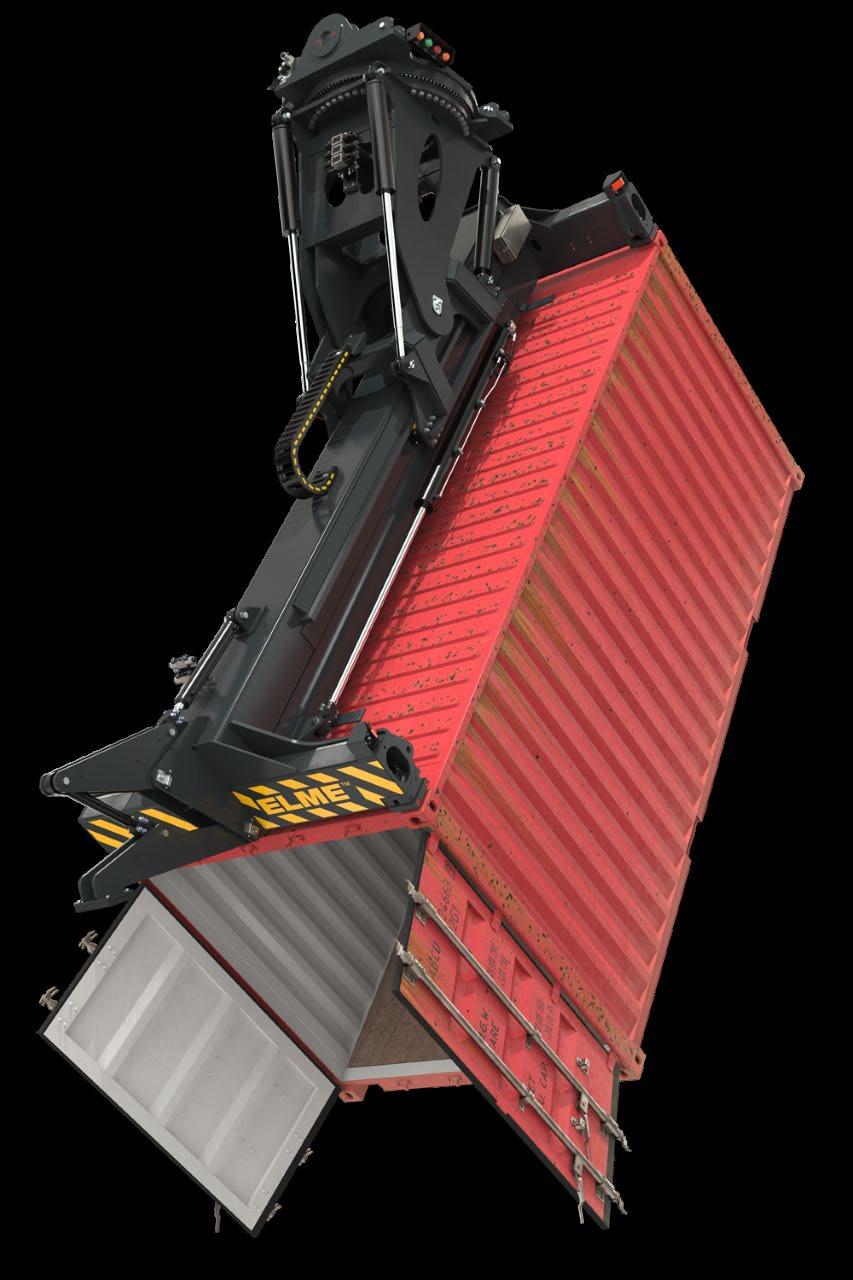
An extensive PRODUCT LINE
The ELME Spreader product line covers spreaders for truck, crane and straddle carriers. In addition, ELME offers a wide range of piggyback attachments and special equipment, such as spreaders with a tilting function, tool changer and slab handler, together with the concept of approved spare parts – ELME Genuine Parts.
The ELME top lift spreader models 327T (fixed, 20ft) and 817T (telescoping, 20-40ft) have a tilting function for handling laden containers with, for example, grain, woodchips and other bulk materials requiring a tilt operation. Both models are designed for mounting on reach stackers and are available in 45° and 60° version. Standard capacity for model 327T is up to 32 tonnes (lifting/tilting); standard capacity of model 817T is up to 45 tonnes (lifting) and 32 tonnes (tilting). The product range of spreaders with a tilting function is also available for some crane spreader models, for example, spreader model 3200T.
For more information, visit: elme.com
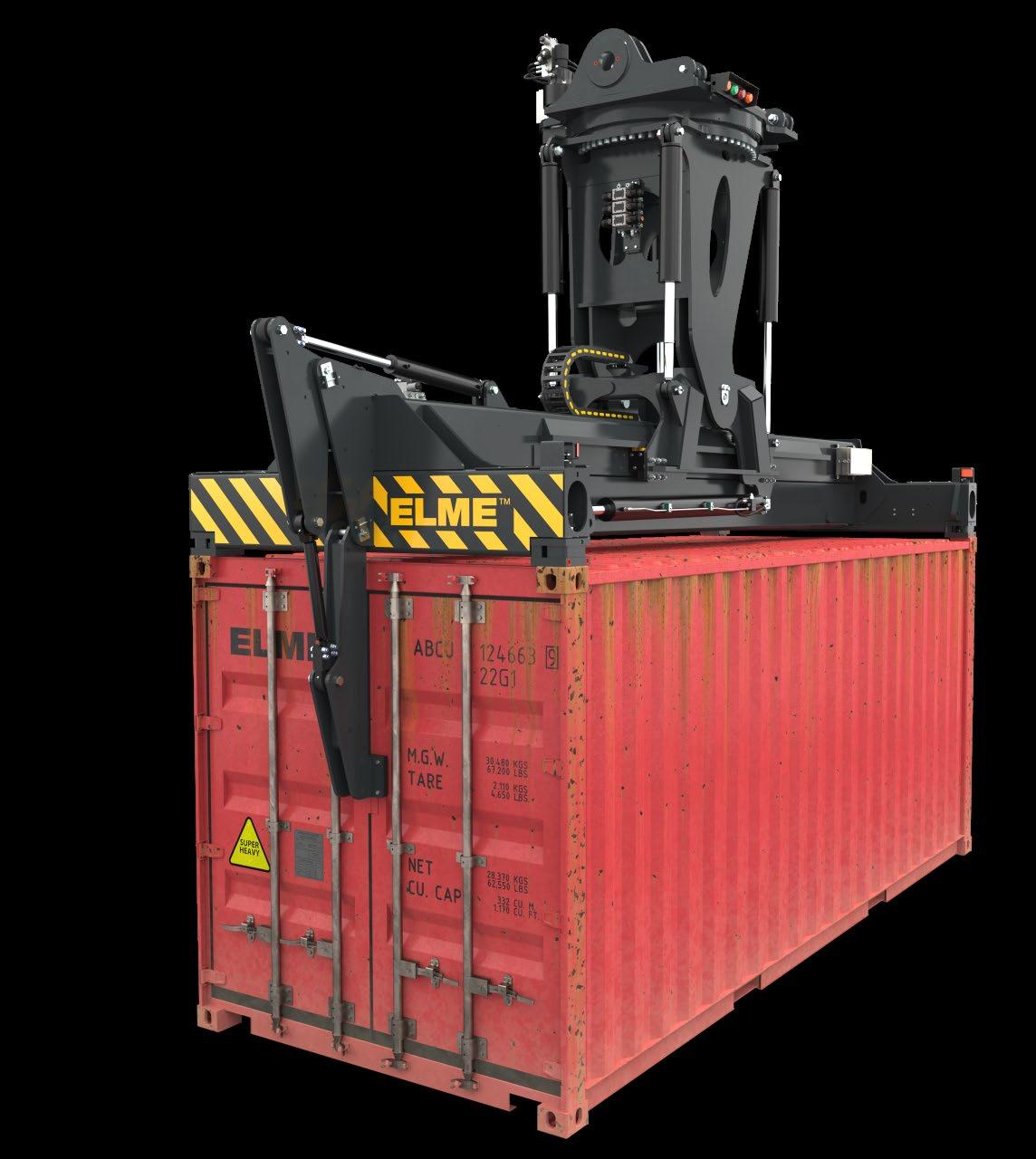
elme.com 3200T | Tilting Crane Spreader
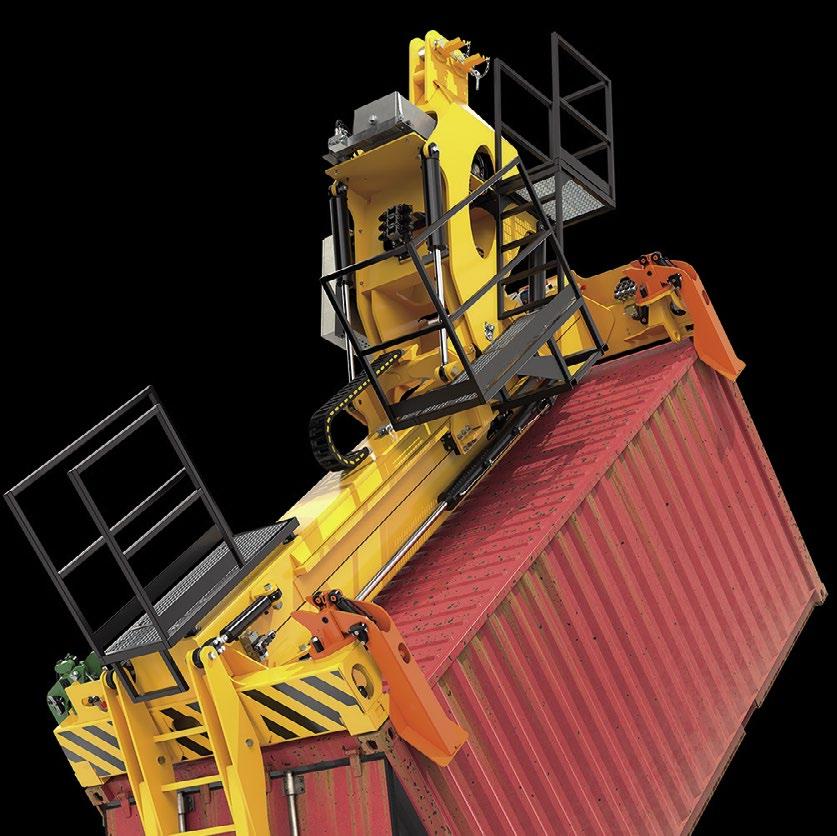
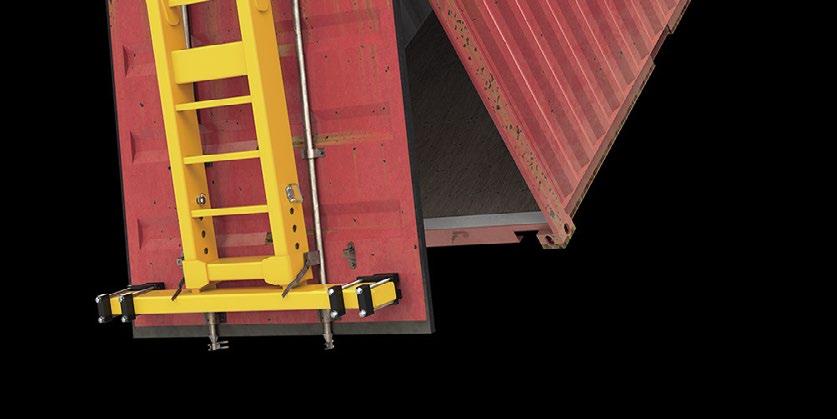
One of our hard-working spreaders
Dedicated crane spreader with tilting function for bulk material handling. Meet the rest of the team at elme.com










